Great Wall Of India: Massive Structure That Surrounds Ancient Fort Of Kumbhalgarh
A. Sutherland - AncientPages.com - This massive structure, called the Great Wall of India, surrounds the ancient Fort of Kumbhalgarh.
Kumbhalgarh - the second most important Fort of Rajasthan after Chittorgarh - is located in Rajasthan in western India. It is a World Heritage Site initially built in the 15th century by Rana Kumbha, ruler of Mewar, between 1433 and 1468 AD.
Walls of Kumbhalgarh fort in Rajasthan, India. iMAGE CREDIT: Shivam Chaturvedi – CC BY-SA 3.0
The massive wall at Kumbhalgarh took nearly a century to construct, making the Fort virtually impenetrable.
Located at a distance of 64 km from Udaipur in the Rajasmand district, Kumbhalgarh Fort is easily accessible from the city of Udaipur.
The massive wall at Kumbhalgarh took nearly a century to construct Built on a hilltop 1,100 m (3,600 ft) above sea level on the Aravalli range, the fort of Kumbhalgarh has perimeter walls that extend 36 km (22 mi), making it among the longest walls in the world. The frontal walls are fifteen feet thick.
Aerial view of a portion of the Kumbhalgarh wall. Image credit: Heman kumar meena - CC BY-SA 3.0
Kumbhalgarh Fort was built by Maharana Rana Kumbha, the ruler of Mewar, a state in western India, between 1433 AD and 1468 AD. This ruler was also a patron of art, music, and architecture.
The impregnable Fort has seven massive gates and seven ramparts folded with one another and equipped with designed walls toughened by curved bastions and huge watch towers. Thanks to its strong structure and solid foundation, the fort made unbeatable to date. The fort's walls are broad enough to stand eight horses side by side. There are not less than 360 temples inside the complex.
The Fort is also known for its famous palace - the Palace of Cloud ('Badal Mahal') - on top of the structure. This beautiful palace has beautiful rooms with a color combination of green, turquoise, and white, presenting a bright contrast to the earthy colors of the Fort. This place gives the appearance of wandering in the world of clouds. Cloud Palace also offers a fantastic panoramic vista of the downtown.
According to popular folklore, Maharana Kumbha used to burn massive lamps that consumed fifty kilograms of ghee – a special butter that originated in ancient India - and a hundred kilograms of cotton to provide light for the farmers who worked during the nights in the valley.
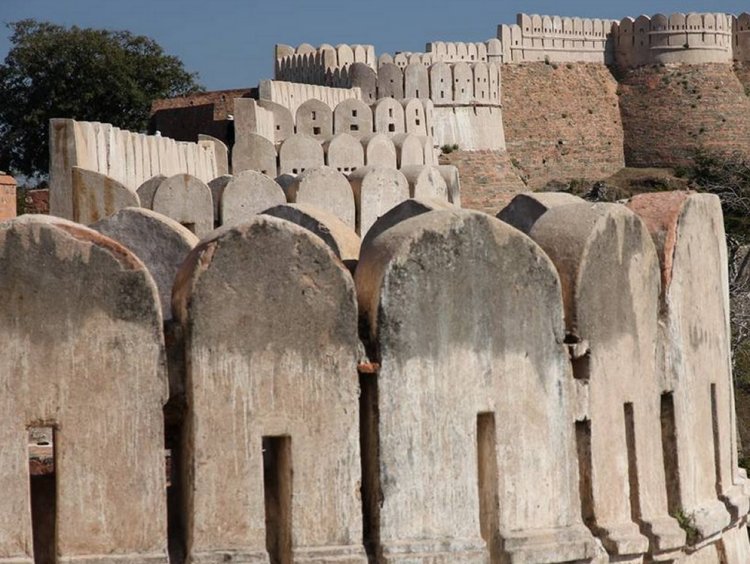 Great Wall, Kumbhalgarh, India. Photo credit: flickr.com/photos/kittell
Great Wall, Kumbhalgarh, India. Photo credit: flickr.com/photos/kittell
The Fort is constructed on the topmost ridges around 1,914 meters above sea level. The fortifications extend to a length of 36 kilometers, which has made this Fort in the international records.
It is stated to be the second-longest wall in the world, after ''the Great Wall of China''. The complex of the Fort has numerous palaces, temples, and gardens making it more magnificent.
General view of the fort at night. Image credit: Kunal 3405 - CC BY-SA 3.0
The hefty walls of the Fort are broad enough to stand eight horses side by side. There are not less than 360 temples inside the Fort complex, including the Shiva Temple.
The robust structure and solid foundation of the Fort made it safe during times of battles and unbeatable.
Yet, despite its magnificence, it is still little known to the outside world.
Written by – A. Sutherland - AncientPages.com Senior Staff Writer
Updated on February 18, 2023
Copyright © AncientPages.com All rights reserved. This material may not be published, broadcast, rewritten or redistributed in whole or part without the express written permission of AncientPages.com
Expand for referencesMore From Ancient Pages
-
 Traces Of Ancient Near East Civilization In America – An Out-Of-Place Ancient Inscription – Part 2
Civilizations | Nov 13, 2020
Traces Of Ancient Near East Civilization In America – An Out-Of-Place Ancient Inscription – Part 2
Civilizations | Nov 13, 2020 -
 Sir Marc Aurel Stein: Famous Fascinating Expeditions To Ancient Places Of The Silk Road
Civilizations | Feb 11, 2016
Sir Marc Aurel Stein: Famous Fascinating Expeditions To Ancient Places Of The Silk Road
Civilizations | Feb 11, 2016 -
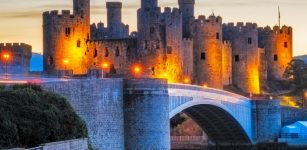 Conwy Castle In Snowdonia: Outstanding Medieval Fortification In Europe
Featured Stories | Oct 16, 2018
Conwy Castle In Snowdonia: Outstanding Medieval Fortification In Europe
Featured Stories | Oct 16, 2018 -
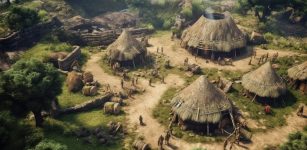 Height Differences Among Neolithic People Was Caused By Environmental Stress Not Genetics
DNA | Dec 13, 2023
Height Differences Among Neolithic People Was Caused By Environmental Stress Not Genetics
DNA | Dec 13, 2023 -
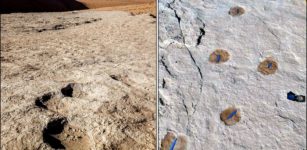 120,000-Year-Old Human Footprints Discovered In Saudi Arabia
Archaeology | Sep 18, 2020
120,000-Year-Old Human Footprints Discovered In Saudi Arabia
Archaeology | Sep 18, 2020 -
 Moses’ Secret Knowledge Of Superior And Forbidden Technology – Alien Intervention And Events Erased From Historical Records – Part 2
Biblical Mysteries | Sep 24, 2020
Moses’ Secret Knowledge Of Superior And Forbidden Technology – Alien Intervention And Events Erased From Historical Records – Part 2
Biblical Mysteries | Sep 24, 2020 -
 Watlington Viking Hoard May Re-Write History Of England
Archaeology | Dec 11, 2015
Watlington Viking Hoard May Re-Write History Of England
Archaeology | Dec 11, 2015 -
 Mysterious Green Light And Ancient Treasures – Cave Of The Gods And Its Secrets
Featured Stories | Jul 3, 2018
Mysterious Green Light And Ancient Treasures – Cave Of The Gods And Its Secrets
Featured Stories | Jul 3, 2018 -
 Legend Of Sleeping Hero Holger Danske: Viking Warrior Who Never Died
Featured Stories | May 8, 2016
Legend Of Sleeping Hero Holger Danske: Viking Warrior Who Never Died
Featured Stories | May 8, 2016 -
 When Did Humans Start Using Roads And What Civilization Built The First Paved Roads?
Archaeology | Oct 26, 2022
When Did Humans Start Using Roads And What Civilization Built The First Paved Roads?
Archaeology | Oct 26, 2022 -
 Disappearance Of Neanderthals: Were Inbreeding And Demographic Shifts Responsible?
Archaeology | Nov 28, 2019
Disappearance Of Neanderthals: Were Inbreeding And Demographic Shifts Responsible?
Archaeology | Nov 28, 2019 -
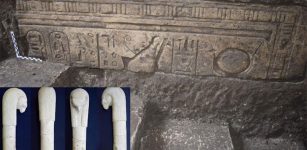 Ancient Tools Used In Religious Rituals In Honor Of Goddess Hathor Discovered In Egypt
Archaeology | Sep 27, 2021
Ancient Tools Used In Religious Rituals In Honor Of Goddess Hathor Discovered In Egypt
Archaeology | Sep 27, 2021 -
 Oil Lamps, Spearheads And Skulls: Was The Te’omim Cave Used By Practitioners Of Necromancy?
Archaeology | Jul 15, 2023
Oil Lamps, Spearheads And Skulls: Was The Te’omim Cave Used By Practitioners Of Necromancy?
Archaeology | Jul 15, 2023 -
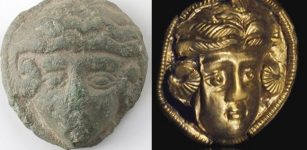 Unique Ancient Bronze Miniature Portraits Of Alexander The Great Found In Ringsted On The Island Of Zealand
Archaeology | Apr 11, 2024
Unique Ancient Bronze Miniature Portraits Of Alexander The Great Found In Ringsted On The Island Of Zealand
Archaeology | Apr 11, 2024 -
 2,000-Year-Old Stringed Instrument Found In Vietnam
Archaeology | Feb 22, 2023
2,000-Year-Old Stringed Instrument Found In Vietnam
Archaeology | Feb 22, 2023 -
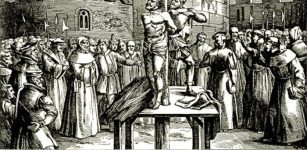 On This Day In History: He Wanted The Bible To Be Available To All – Burned At The Stake On Oct 6, 1536
News | Oct 6, 2016
On This Day In History: He Wanted The Bible To Be Available To All – Burned At The Stake On Oct 6, 1536
News | Oct 6, 2016 -
 Gigantic Asipatra: Terrifying Mythical Monster Bird In Hindu Beliefs
Featured Stories | Jun 14, 2017
Gigantic Asipatra: Terrifying Mythical Monster Bird In Hindu Beliefs
Featured Stories | Jun 14, 2017 -
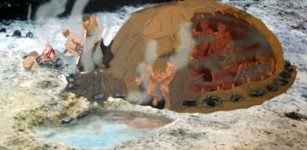 Enigmatic Bronze Age Fulacht Fiadh: ‘Kitchens’ Of The Legendary Irish Warriors
Civilizations | Nov 26, 2018
Enigmatic Bronze Age Fulacht Fiadh: ‘Kitchens’ Of The Legendary Irish Warriors
Civilizations | Nov 26, 2018 -
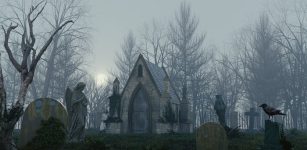 Strange Tale Of Demonic Possession And Exorcism In 17th-Century New France – What Happened?
Featured Stories | Oct 21, 2022
Strange Tale Of Demonic Possession And Exorcism In 17th-Century New France – What Happened?
Featured Stories | Oct 21, 2022 -
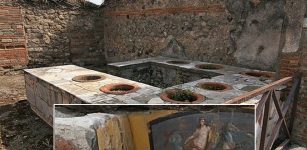 Another 2,000-Year-Old ‘Snack Bar’ Discovered In Pompeii
Archaeology | Apr 10, 2019
Another 2,000-Year-Old ‘Snack Bar’ Discovered In Pompeii
Archaeology | Apr 10, 2019



